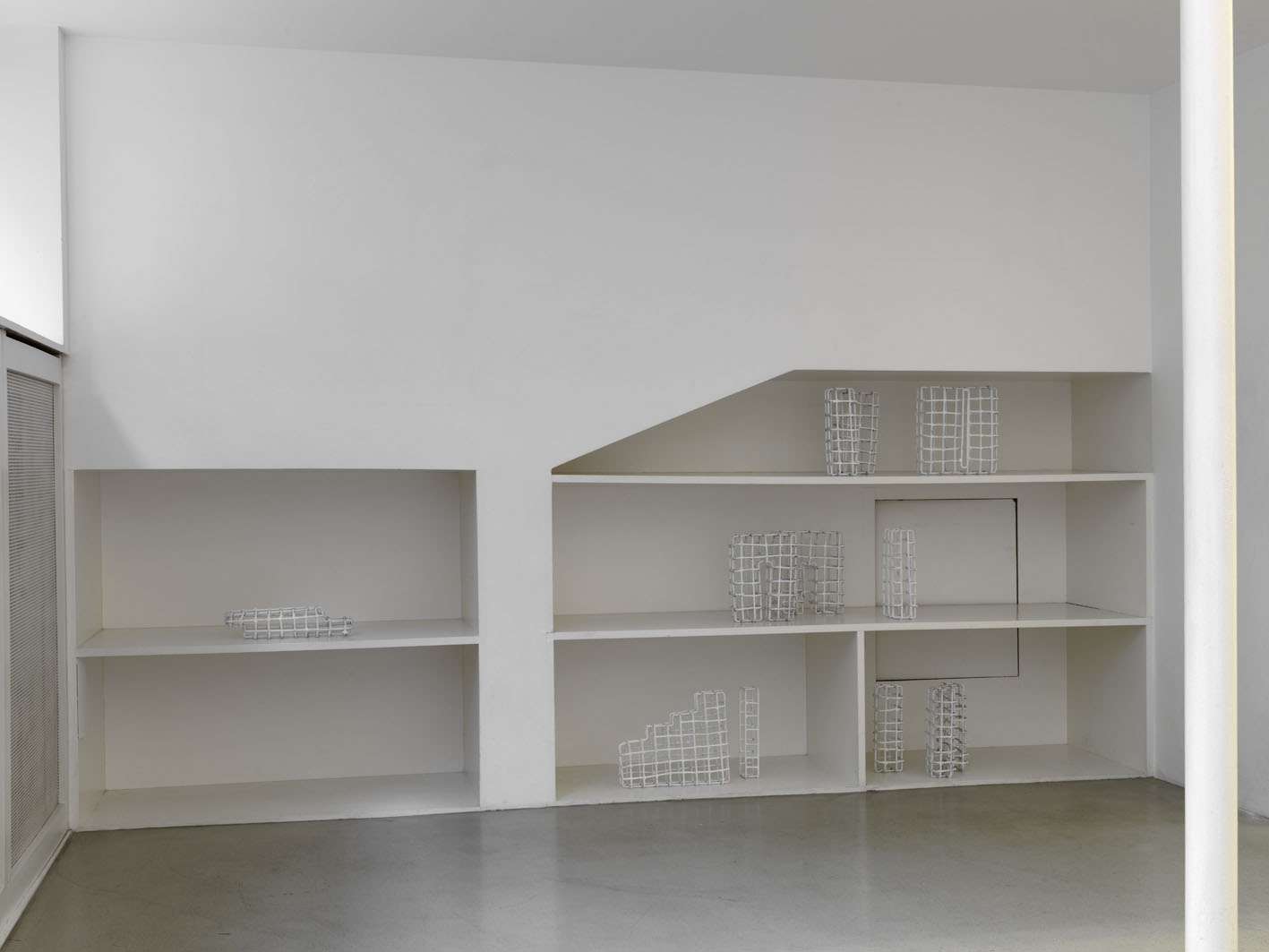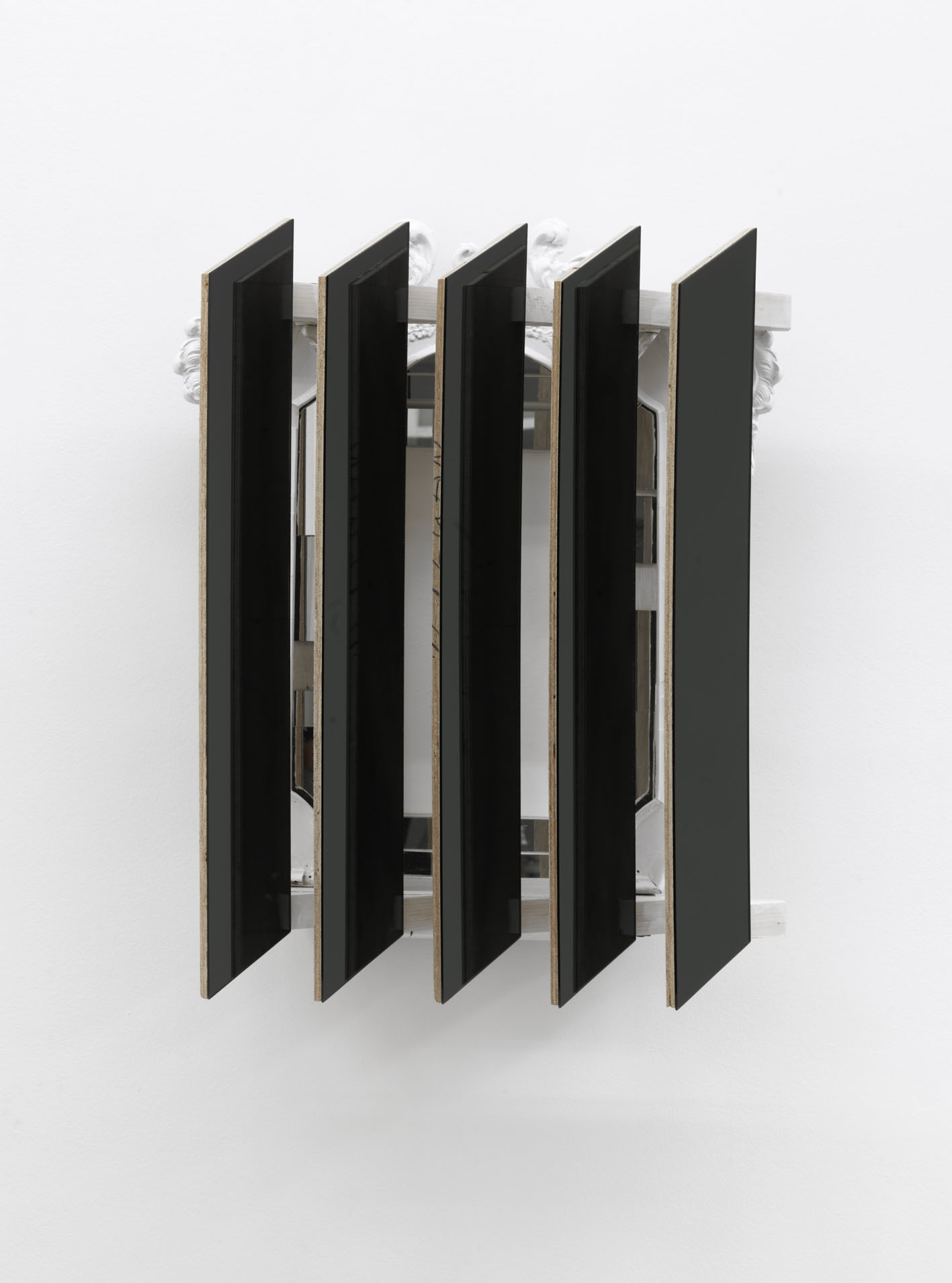Curated by Adrienne Drake
with Giorgio Andreotta Calò, Becky Beasley, Wolfgang Berkowski, Stefan Bruggemann, Manfred Pernice, Gianni Piacentino, Giulia Piscitelli, Heather Rowe, Nora Schultz, Alexandre Singh
Hippocrene Foundation 12, rue Mallet-Stevens Paris
Despite Our Differences features a selection of artworks from the Giuliani Collection, with a site-specific intervention commissioned specifically for the exhibition. Rather than marrying the artworks to a central theme, the show instead departs from a loose logic, faithful to the hybrid nature of the Collection. The exhibition is envisioned more as a constellation of related ideas in which micro-conversations between works illustrate intersecting narratives and inter-relational properties.
Some of the works are site-responsive, reacting to different aspects of the building’s structure: surface, scale and viewpoint. The commission by Wolfgang Berkowski, (This is how you disappear/Grid) Case Study IV (2013), insinuates itself directly into the existing architecture, examining its ability to shape the representation and experience of art. His Models for Inflatable Cages (2004/2013) modulates and limits the movements of the audience, proposing a discussion of their sheer existence: the work versus the audience. Manfred Pernice’s, Untitled (AVA) (2008), instead pulls the viewer away from the surface and positions them in the very centre of the exhibition space, free to move around the work. This monument of interlocking particle boards, architectural fragments and disparate collection of discarded objects of consumption – an empty cigarette pack, dishes, a McDonald’s hamburger wrapper, commemorates the forgotten moments of the everyday. The architectural arrangement of Untitled (AVA) further acts as a counterpoint to the natural form of Giorgio Andreotta Calò’s, Clessidra (U) (2013), a bronze sculpture cast from a deteriorated mooring pole found in the lagoon of Venice. Over the years, the tide and salt water transformed this pole into a rough and fantastical looking monument to time.
The anti-monumental sculptures of Nora Schultz are typically made from found industrial materials, abandoned throwaways of contemporaneity, taken out of their original context and re-assembled by the artist. This candid materiality imbues her sculptures with the immediacy of the present moment. The floor-pieceModel for Underground Airport (After Vantongerloo)(2010) activates the path of the viewer as they walk through the space. Gianni Piacentino similarly addresses the conventions of space and surroundings with his Dark Red-Purple Small Pole III (1966). This beautifully crafted work not only demonstrates the artist’s early, but long-standing inquiry into chromatic research, artistry and the ambiguity of form in space, in contrast to the rough-hewn materials of Schultz it pushes the boundaries of sculpture and design.
Such boundaries are further addressed by other works in the exhibition in a dynamic interplay between different media and the examination of form. Concerning the Apparent Asymmetry of Time: Painting (2010), by Alexandre Singh, envisages a chronicle of modern art if the second law of thermodynamics has been reversed: if, instead of a movement towards disorder, there would be a tendency towards order. The resulting story appears as an intricate flowchart that weaves together fact and fiction. The artist questions historical narrative and representation and shows ways that language and ideas can mutate and change over time. He positions drawing not only as a physical gesture, but as a conduit for arrangements that suggest possible interpretations and processes of connection.
The work of Becky Beasley moves between sculpture and photography in an exploration of the relationship between image and object, the body and interiority. Her two works in the exhibition, the photograph Figure (Part 2) (2008) and the sculpture Plank III (Covering Ground)(2008), underscore the artist’s interrogation of the way in which image, object and language operate in relation to each other. Heather Rowe instead interrogates the areas around sculpture, architecture and installation. She plays on transitional spaces and employs strategies that allude to the space of architectural models, but her use of scale and materials invites a one on one relationship with the viewer. In Untitled (2009), dark glass and angled mirrors reflect and distort the body as the viewer moves through the exhibition space. One has only an obscured reflection, a fractured representation of the self, which alludes to the subliminal fear of the fragmentation of the ego. The body is also the subject of Giulia Piscitelli’s black and white video projection Plessimetro (2009), in which indistinct, ghost-like figures try to move in unison to a steady, repetitive rhythm. Piscitelli studies the individual and collective everyday in an attempt to decipher the subject through an exploration of identity and persona. With his Seven Reversed Mirrors (2010), Stefan Brüggemann instead refuses the viewer the acknowledgment of the body. The mirrors are denied their original function and are turned towards the wall so that nothing can be reflected in them – no images, no ideas. By reversing the mirror, the artist ultimately negates the relationship between art and the viewer, art and reality.
The Hippocrene Foundation is an independent, public interest, family foundation whose primary mission is to contribute to strengthening the cohesion between young Europeans. It works towards “Living Europe” by providing financial support to cultural, educational and humanitarian initiatives. Since October 2002, the foundation presents art exhibitions entitled Propos d’Europe. These exhibitionsaim to place the spotlight on a country’s artistic scene as well as Europe’s richness and cultural diversity by presenting the works of artists living in various countries on the continent, whose creation is nourished by his or her culture.
The Hippocrene Foundation also originated the Hippocrene Prize for Education about Europe, which launched its first edition in 2010 in partnership with the Academy of Paris and with the support of the Maison de l’Europe de Paris and the European Association of Education (AEDE). Since 2012, the prize is organised at the national level in partnership with the national Ministry of Education and the Europe-Education-Formation-France agency. In 2013, the foundation also organised the Paris-Berlin prize, in partnership with the Allianz Foundation, the Paris and Berlin educational authorities and with the support of the OFAJ, to mark the anniversary of the treaty Elysée Treaty.














